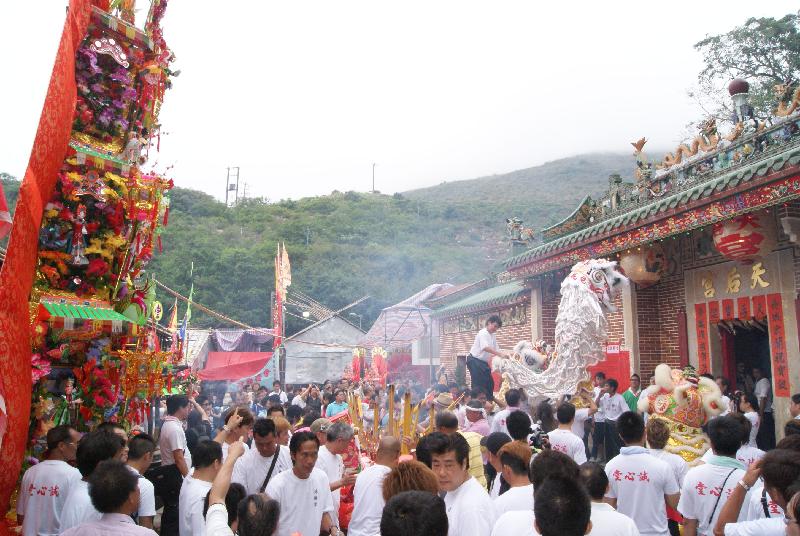Two intangible cultural heritage (ICH) items from Hong Kong, the Tin Hau Festival in Hong Kong and the Hong Kong cheongsam making technique, have been successfully inscribed onto the Fifth National List of ICH announced by the State Council earlier.
At the invitation of the Ministry of Culture and Tourism of the People's Republic of China in June 2019 to apply for inscription onto the National List of ICH, the Hong Kong Special Administrative Region (HKSAR) Government submitted the application after consulting the views of the experts of the ICH Advisory Committee.
The two successfully inscribed items are in the categories of "social practices, rituals and festive events" and "traditional craftsmanship" defined by the Convention for the Safeguarding of the ICH promulgated by the United Nations Educational, Scientific and Cultural Organization. With outstanding historical and cultural value, these two items are representative of their kind. Both items were also inscribed onto the First ICH Inventory of Hong Kong and the Representative List of the ICH of Hong Kong in 2014 and 2017 respectively.
Details of the two items are as follows:
(1) Tin Hau Festival in Hong Kong
The Tin Hau belief has a long history in Hong Kong. It is believed that the Tin Hau Temple located in Joss House Bay, Sai Kung, was built in the Southern Song dynasty. Every year, on the 23rd day of the third lunar month, or on other designated dates, the birthday of Tin Hau is celebrated in different scales in various districts. Some local organisations stage Cantonese opera performances to express gratitude to Tin Hau, and organise the fa pau lots drawing ceremony. Some may also hold parades along waterways or on land.
(2) Hong Kong cheongsam making technique
The origin of the cheongsam dates back to decades ago and it became popular during the early Republican period. After World War II, many tailors moved from Shanghai to Hong Kong. As a consequence, the craftsmanship of the Hong Kong cheongsam was enriched and Western sewing skills were taken up, resulting in the uniqueness of the Hong Kong cheongsam making technique. Once everyday attire for Hong Kong women, the elegant dress can these days be seen at special occasions. The men's cheongsam is a symbol of the seniority of clan elders in the New Territories, and carries important social significance. The men's cheongsam was recognised as formal wear for attending important occasions such as the spring and autumn ancestral worship of clans and other large community celebrations including the Jiao Festival.
The State Council announced four batches totalling 1 372 items inscribed onto the National List of ICH in 2006, 2008, 2011 and 2014. The governments of Guangdong, the HKSAR and the Macao Special Administrative Region jointly applied and succeeded in inscribing Cantonese opera and herbal tea onto the First National List of ICH. In 2011, four local ICH items, namely the Cheung Chau Jiao Festival, the Tai O dragon boat water parade, the Tai Hang fire dragon dance and the Yu Lan Festival of the Hong Kong Chiu Chow community, were successfully inscribed onto the Third National List of ICH. In 2014, four local ICH items, namely the Hakka unicorn dance in Hang Hau in Sai Kung, the Wong Tai Sin belief and customs, the Quanzhen Temples Taoist ritual music and the arts of the guqin, were successfully inscribed onto the Fourth National List of ICH.
The Government will continue its commitment to preserving and promoting local ICH and will also encourage the participation of the community in supporting the transmission and development of Hong Kong's traditional culture.
Follow this news feed: East Asia







